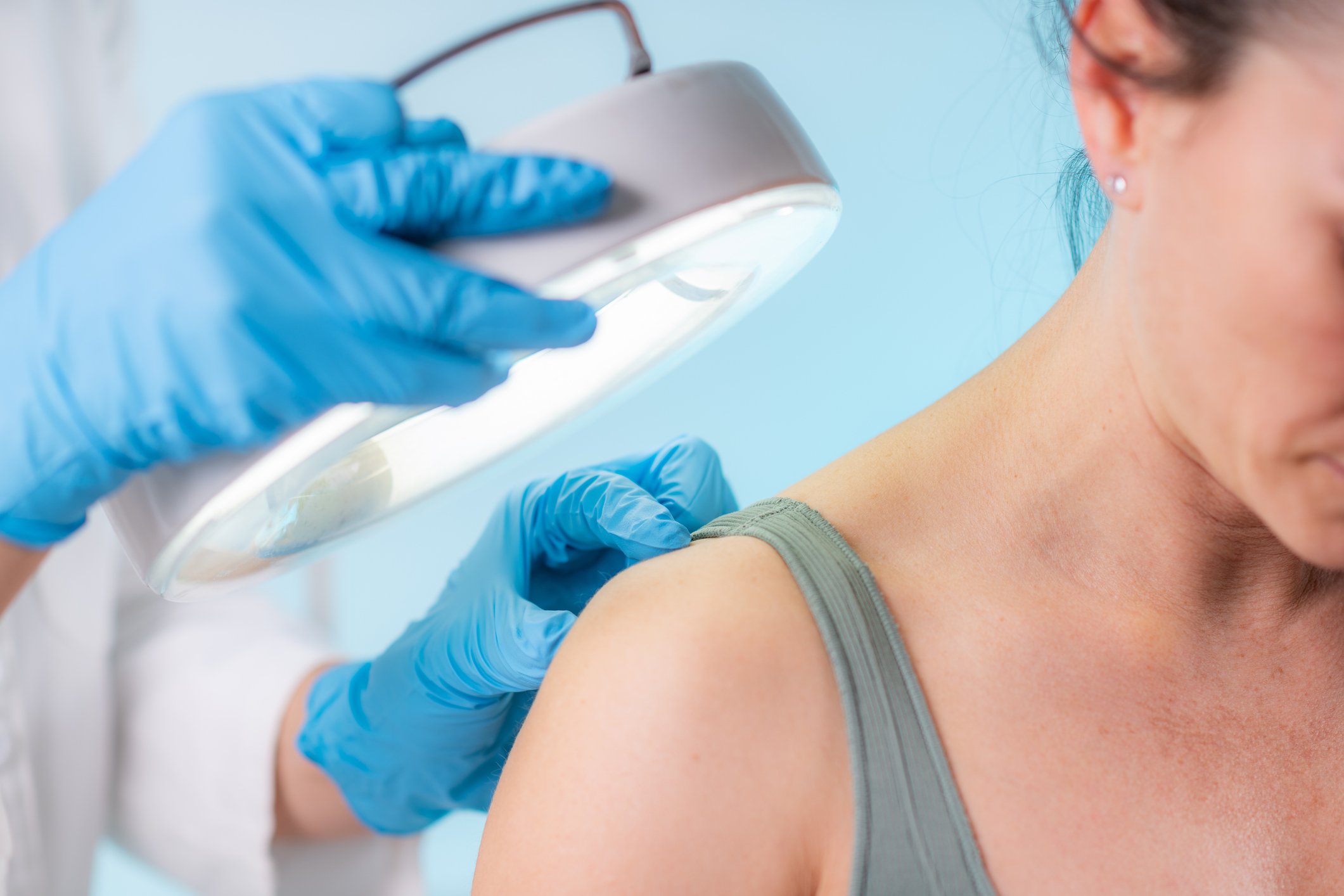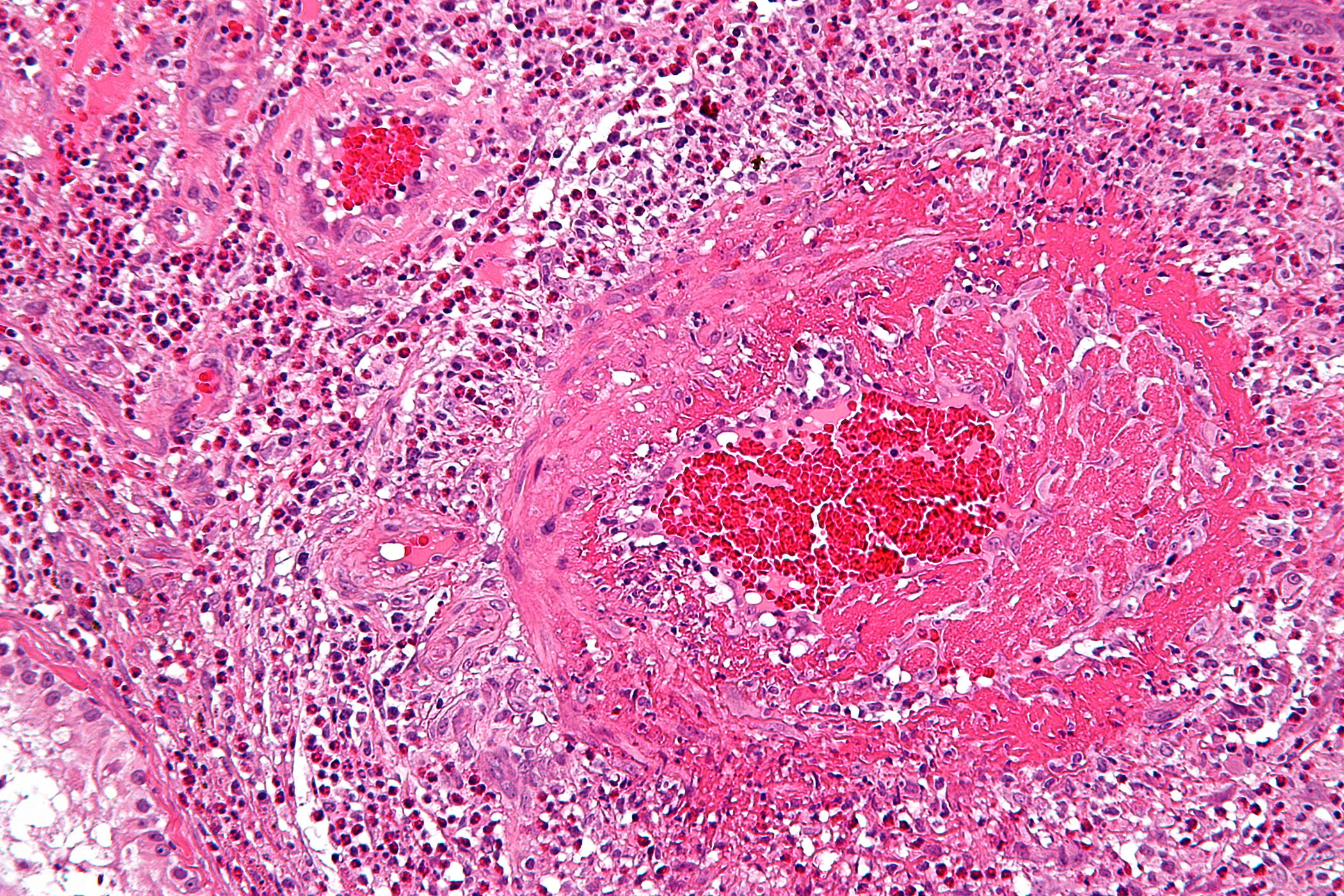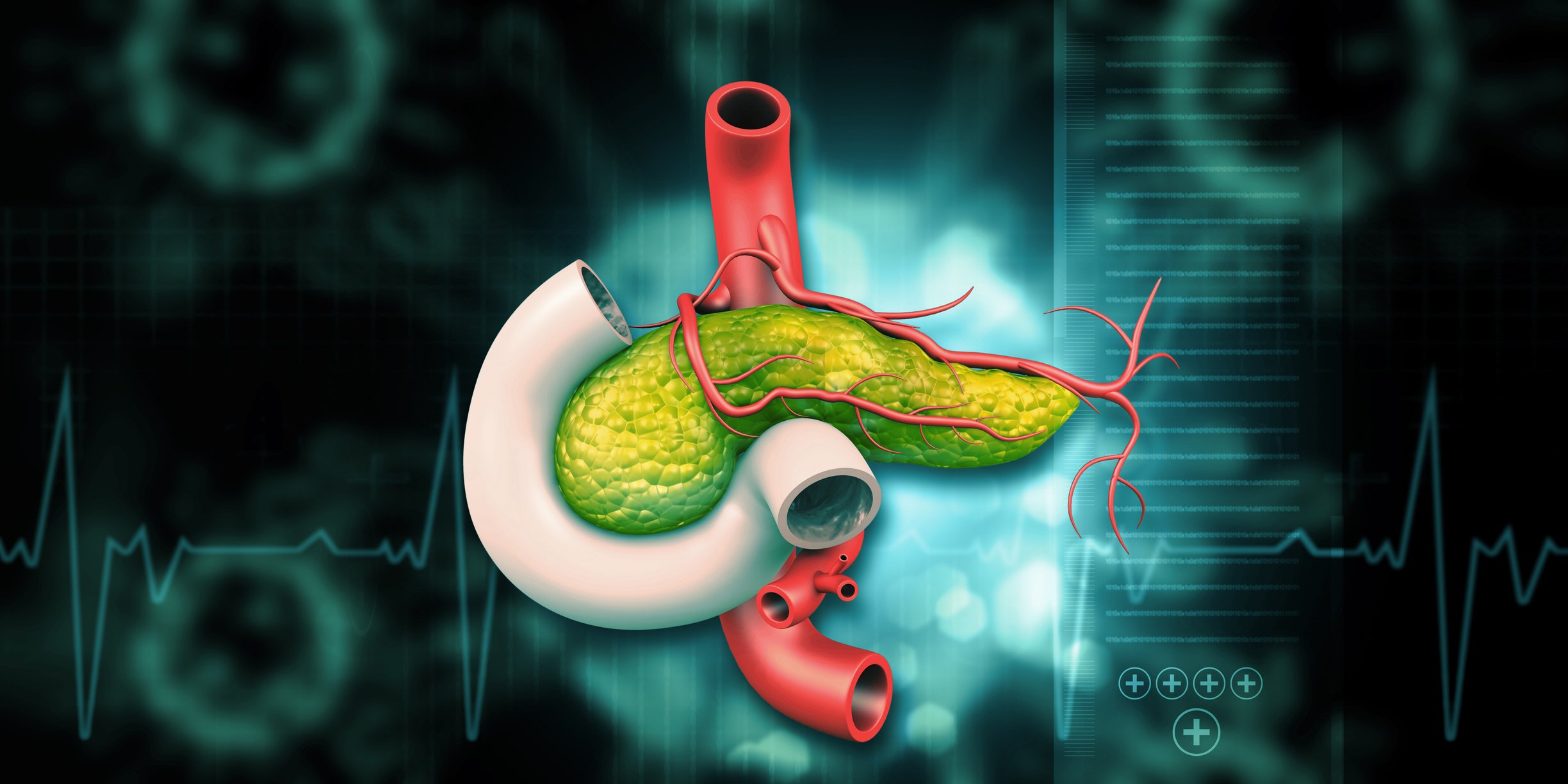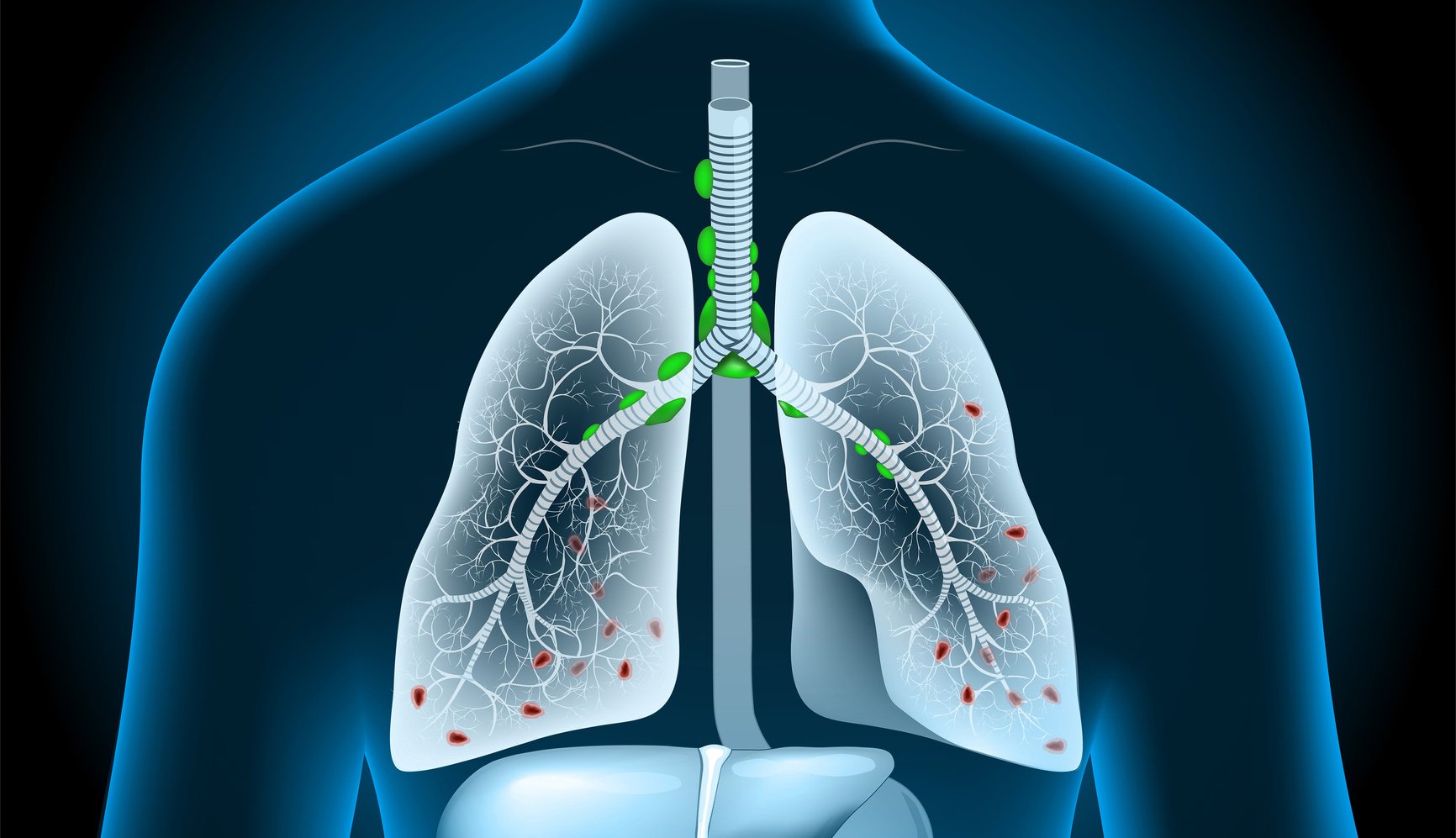Microhaematuria can be harmless, but it can also be a sign of a serious illness. Although current studies show that in 80% of cases it is an idiopathic cause with no pathological value, patients with microhematuria should be investigated further. There is no international consensus on the scope of the investigations. To assess whether a referral to a specialist is indicated, a risk stratification is suggested.
Microhematuria is present when there are three or more erythrocytes per field of view in the microscopic analysis and can also be indicated by urine test strips [1]. Microhematuria is often asymptomatic and has a prevalence of around 4-5% in everyday clinical practice [2]. The cause of microhematuria remains unknown in over two thirds of positive findings. In other cases, it is caused by a stone disease, prostate hemorrhage, cancer, infection or glomerular kidney disease [1]. The DEGAM guideline uses the term “non-visible hematuria” instead of microhematuria, which is defined as follows: if more than about 3000 erythrocytes/minute are excreted in the primary urine, which corresponds to >10 erythrocytes/µl urine [1,3]. With conventional urine strip tests, the lower detection limit is 5 intact or 10 hemolyzed erythrocytes/µl of urine.
Recommendations for basic diagnostics
In patients with microhematuria, in addition to a medical history and physical examination, the determination of inflammatory parameters and renal retention values and, if necessary, sonography of the kidneys and bladder are recommended [1,3]. Urine microscopy can be used to differentiate between glomerular (presence of acanthocytes or erythrocyte cylinders) and non-glomerular (presence of normomorphic erythrocytes) causes [1]. Albuminuria indicates a nephrogenic genesis and usually requires further internal nephrological care [1]. Patients with isolated glomerular hematuria have a higher risk of kidney disease and should receive check-ups twice a year. In the case of non-glomerular hematuria, patients with risk factors such as tobacco smoking, advanced age and male gender and/or exposure to potential carcinogens such as tar or products from metallurgy as well as paints and solvents should consider extended risk-adapted diagnostics (e.g. urethrocystoscopy, urine cytology and, if necessary, CT urography) due to the higher probability of relevant diagnoses, although the relevant recommendations of international specialist societies are not uniform.
Cystoscopic examination indicated?
Urothelial carcinoma of the urinary bladder is the most common malignant disease of the urinary tract [4]. While the estimated risk for patients with hematuria is up to 9%, the corresponding value for patients with microhematuria is 1.6% [5]. Devlies et al. mention in a review article published in 2024 that, given the low prevalence of urothelial carcinoma of the bladder in patients with microhematuria, there is controversy regarding the additional clinical benefit of cystoscopy [6–8]. The following studies are cited in the systematic review:
Madeb et al. [9]: Based on registry data, 258 male patients with microhematuria were followed up. Two of them were diagnosed with urothelial carcinoma of the urinary bladder during the course of the study; one after a period of 6.7 years and the other after 11.4 years.
Jaffe et al. [10]Intravenous urography was performed in 75 of 212 patients with microhematuria and a negative initial result. Of these 75 patients, two were diagnosed with a ureteral tumor and one with a renal pelvis tumor.
Devlies et al. suggest discussing the further procedure after baseline diagnostics with the patient and explaining the advantages and disadvantages of each approach [6]. Over the years, cystoscopy has evolved from a procedure under general anesthesia to an outpatient procedure under local anesthesia. Recently, improved cystoscopic modalities such as fluorescence-based cytoscopy, photodynamic-based cystoscopy, narrow-band imaging and/or confocal laser endomicroscopy have become available. The identification of alternative biomarkers that have the same informative value as cytoscopy is still the subject of current research efforts [6].
Literature:
- “Hematuria”, Urology Planegg, www.ukmp.de/news/aktuelles/fachkreise,(last accessed 02.05.2024)
- Bolenz C, et al: Clarification of hematuria. Dtsch Arztebl Int 2018; 115: 801-807.
- “Non-visible hematuria (NSH)”, DEGAM S1 recommendation for action. AWMF Register No. 053-02.
- Sung H, et al: Global cancer statistics 2020: GLOBOCAN estimates of incidence and mortality worldwide for 36 cancers in 185 countries. CA Cancer J Clin 2021; 71: 209-249.
- Takeuchi M, et al: Cancer prevalence and risk stratification in adults presenting with haematuria: a population-based cohort study. Mayo Clin Proc Innov Qual Outcomes 2021; 5: 308-319.
- Devlies W, et al: The Diagnostic Accuracy of Cystoscopy for Detecting Bladder Cancer in Adults Presenting with Haematuria: A Systematic Review from the European Association of Urology Guidelines Office. Eur Urol Focus 2024; 10(1): 115-122.
- Jubber I, et al: Non-visible haematuria for the detection of bladder, upper tract, and kidney cancer: an updated systematic review and meta-analysis. Eur Urol 2020; 77: 583-598.
- Malmstrom PU, et al: Progress towards a Nordic standard for the investigation of haematuria: 2019. Scand J Urol 2019; 53: 1-6.
- Madeb R, et al: Long-term outcome of patients with a negative work-up for asymptomatic microhaematuria. Urology 2010; 75: 20-25.
- Jaffe JS, et al: A new diagnostic algorithm for the evaluation of microscopic haematuria. Urology 2001; 57: 889-894.
FAMILY PHYSICIAN PRACTICE 2024; 19(5): 42











